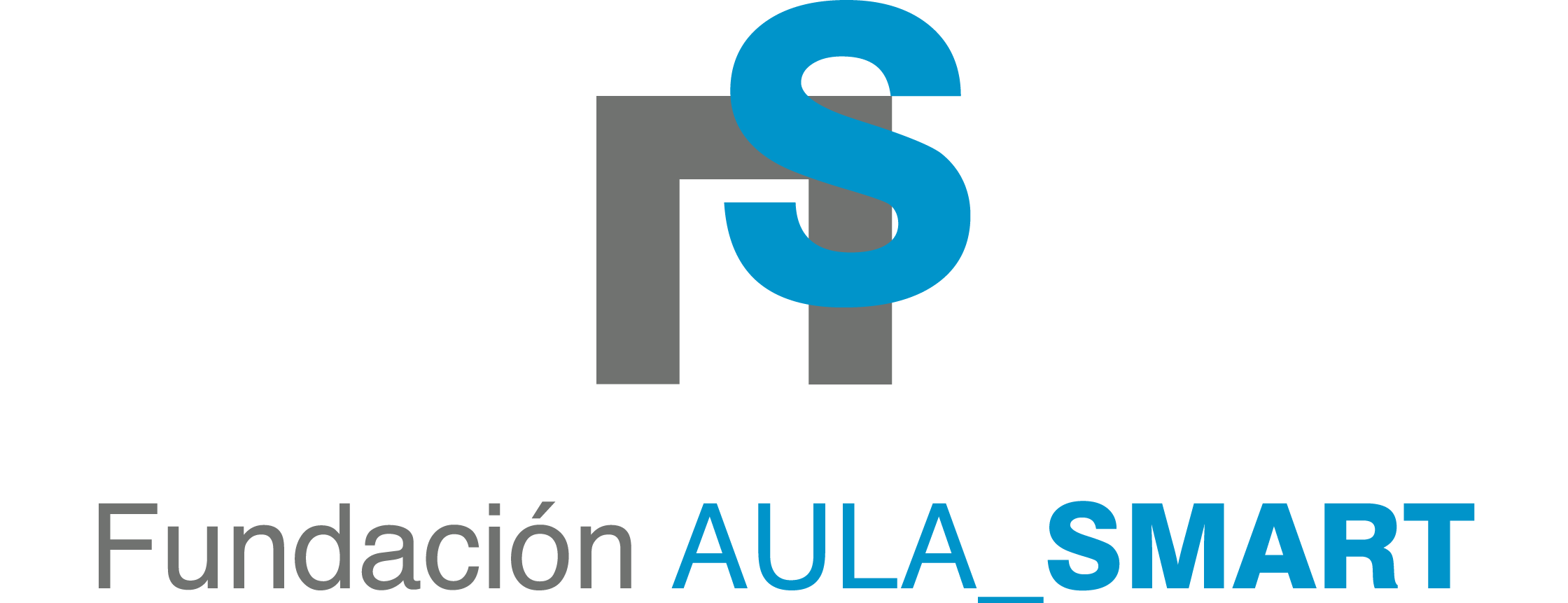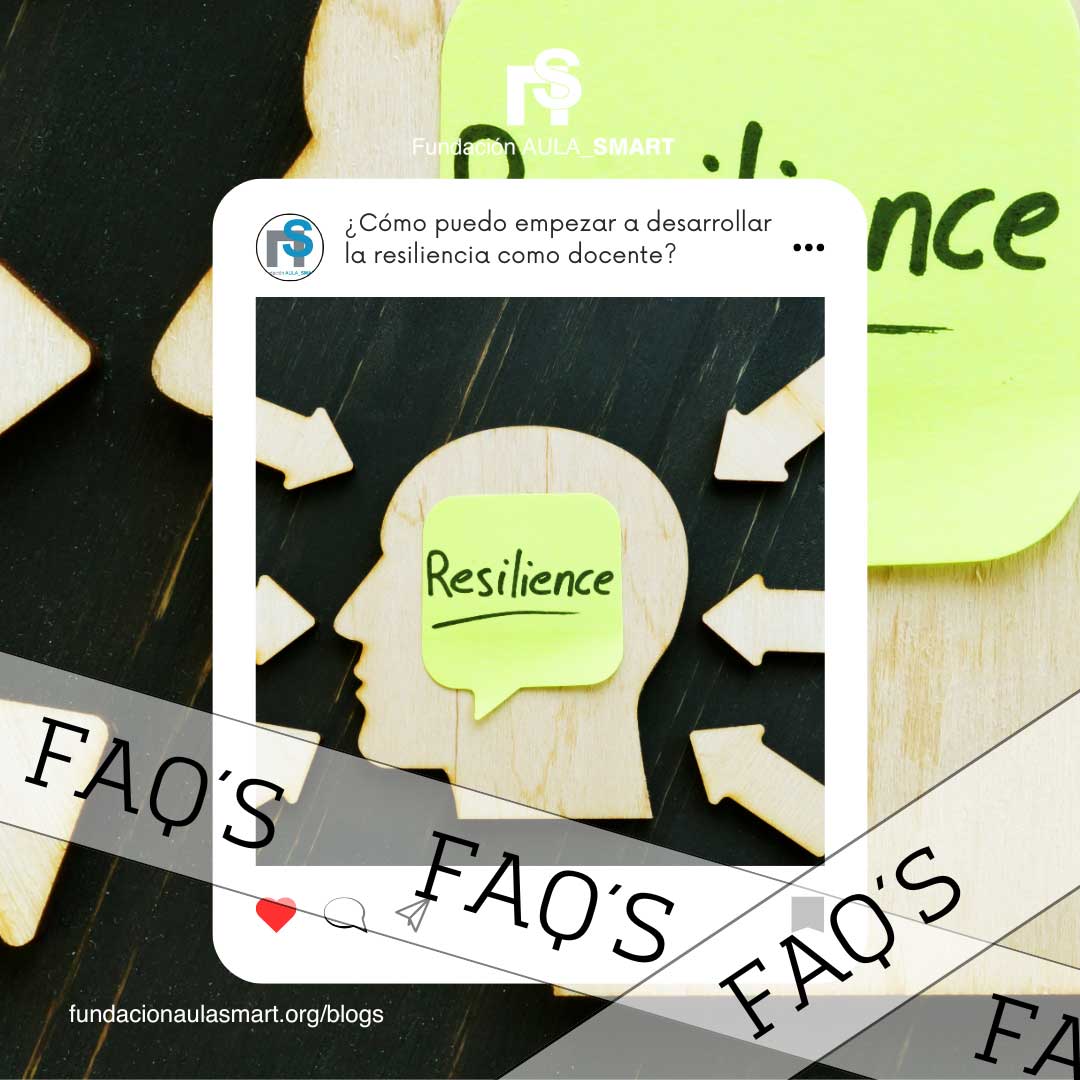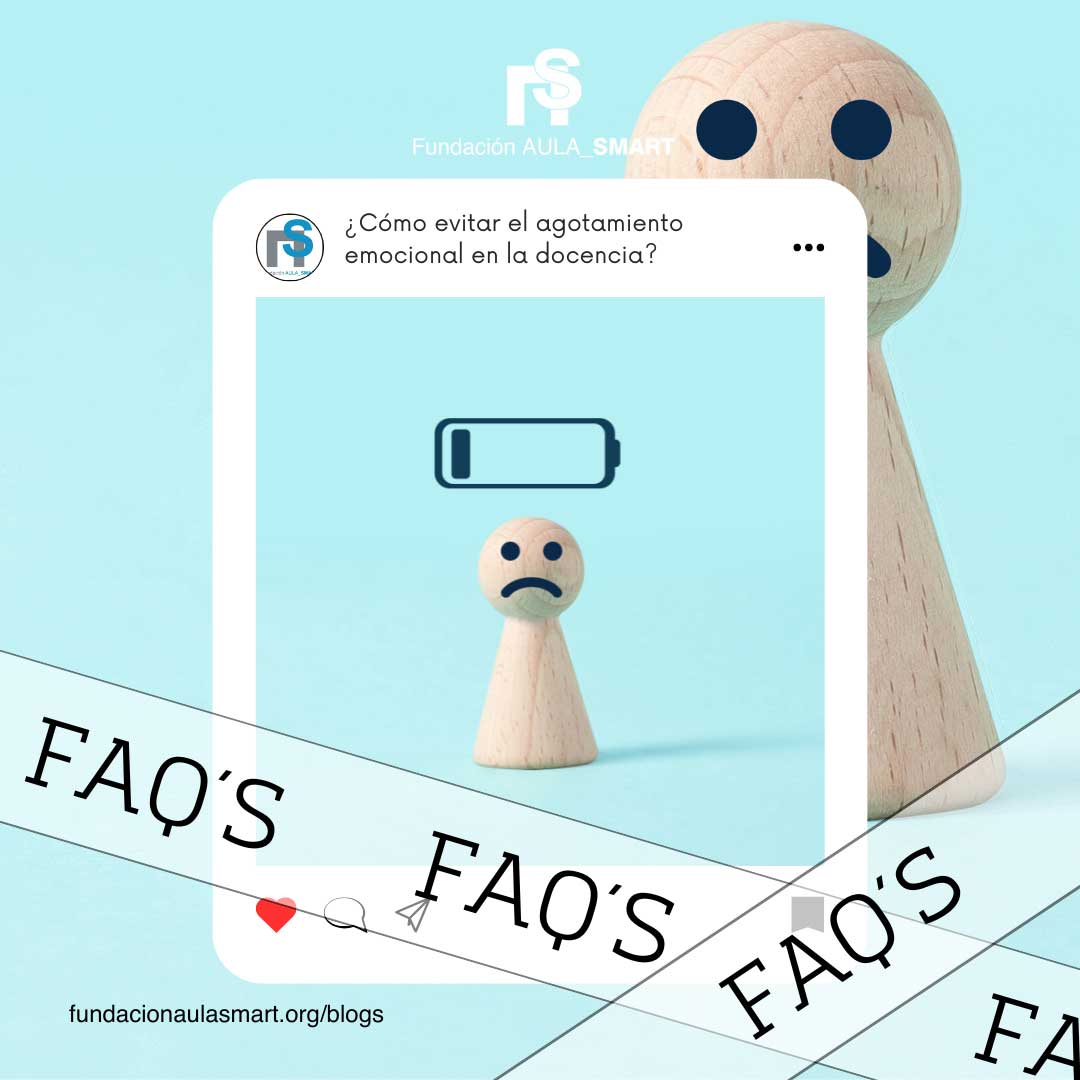The emotional well -being of teachers is essential to guarantee a healthy teaching and learning environment. Stress management and the development of emotional intelligence not only benefit educators, but also their students. A teacher who knows how to manage his stress can generate a more positive learning environment, favoring the participation and performance of students.
Stress can affect motivation and classroom performance. This article provides strategies to handle stress and strengthen emotional intelligence, in order to help teachers face the daily challenges of their profession and improve their quality of life.
Factors that generate stress in teachers
Stress in teachers can originate for different reasons, and knowing their causes is the first step to handle it effectively. Next, the main factors that cause it are presented:
- Labor overload and lack of time: Teachers have a workload that is not limited to class hours. The preparation of materials, correction of constant exams and meetings can generate a feeling of exhaustion and lack of time for other personal activities.
- Interpersonal relationships in the school environment: Maintaining a good relationship with colleagues, managers and students is not always simple. Conflicts in the classroom or in the institution can be a source of tension and discomfort.
- High expectations and social pressure: Teachers are expected to be guides, mentors and models to follow. This can be a great responsibility and generate high levels of stress if it is not handled properly.
- Lack of resources and institutional support: Many teachers work in conditions where educational resources are scarce and the support of the administration is limited. This situation can make daily work more complicated and frustrating.
Consequences of teaching stress
Teaching stress can have significant consequences in professional health and performance. These are some of the main repercussions:
- Impact on physical and mental health: Chronic stress can lead to health problems such as headaches, insomnia, fatigue, anxiety and depression. If it is not handled properly, these problems can affect the teacher's quality of life.
- Decrease in motivation and commitment: When a teacher feels constantly stressed, he can lose interest in his work, reducing his performance and negatively affecting his students.
- Relationship with exhaustion and burnout: Burnout is a state of physical and emotional exhaustion that can make the teacher feel overflowing, ineffective and disconnected from his vocation.
Emotional Intelligence: Key for stress management
Emotional intelligence is the ability to recognize, understand and manage their own emotions, as well as those of others. It is an essential resource for teachers, since it allows them to face the daily challenges with greater balance and resilience.
The development of emotional intelligence helps improve communication, empathy and stress management, promoting a more positive and effective teaching environment.
Strategies to improve emotional intelligence in teachers
-
Self -awareness:
Self -awareness is the ability to identify, understand and analyze our own emotions at the time they occur. It is essential for emotional self -regulation and informed decision making. A teacher with high self -awareness can recognize their emotional states and how they affect their behavior in the classroom.
To improve self -awareness, it is useful to bring an emotional newspaper where teachers register their daily feelings and the factors that trigger them. They can also practice meditation and mindfulness to increase connection with their emotions. Another method is to look for feedback from colleagues and students to obtain an external vision about their emotional management.
In addition, self -awareness allows teachers to anticipate situations that can generate stress, which facilitates the implementation of preventive strategies. Reflecting on how emotions influence teaching and relationship with students is key to a positive educational environment.
-
Self -control:
Self -control refers to the ability to handle and regulate our emotions to respond properly to various situations. In teaching, facing challenges without losing calm is crucial to create a safe and respectful learning environment.
To improve self -control, teachers can practice deep breathing techniques and relaxation to reduce emotional reactivity. Another strategy is cognitive restructuring, which implies reformulating negative thoughts in more positive and realistic approaches. It is also advisable to establish routines and habits that promote emotional balance, such as active breaks or stretching exercises during the working day.
Likewise, self -control helps avoid impulsive responses in times of tension. When developing this ability, teachers can maintain a calm tone of voice and avoid aggressive body language, which contributes to the effective resolution of conflicts in the classroom.
-
Empathy:
Empathy is the ability to understand and share the feelings of others. In teaching, this ability allows teachers to connect with their students, understand their difficulties and emotionally support them in their learning process.
One way to develop empathy is to practice active listening, paying attention to what students say without interrupting and showing genuine interest in their concerns. It is also useful to perform role-playing exercises in which teachers get into the students to understand their emotions and experiences.
Empathy encourages an inclusive learning environment, where students feel valued and understood. An empathetic teacher is able to adapt their teaching methods to the emotional and cognitive needs of each student, which improves their academic performance and emotional well -being.
-
Social skills:
Social skills are essential for effective communication, conflict resolution and the creation of healthy interpersonal relationships in the educational environment. These skills include the ability to work as a team, negotiation and persuasion.
To improve social skills, teachers can participate in assertive communication workshops, where they learn to express their ideas clearly and respectfully. It is also advisable to practice emotional intelligence in interaction with colleagues and students, promoting respect and cooperation.
Another strategy is positive conflict management. Instead of avoiding problems, teachers can address them with a collaborative approach, looking for equitable solutions and promoting mutual understanding. This not only reduces stress in the classroom, but also teaches students to solve their own conflicts in a healthy way.
-
Motivation:
Motivation is the internal impulse that leads us to reach our goals and move on despite the challenges. In teaching, high motivation is key to inspiring students and maintaining commitment to teaching.
To stay motivated, teachers can establish short and long -term objectives that allow them to see progress in their professional development. They can also look for activities that are rewarding, such as innovation in their teaching methods or participation in educational projects.
Social support also plays an important role in motivation. Surrounding colleagues with positive mentality and sharing successful experiences can reinforce the enthusiasm for teaching. In addition, recognizing the achievements and positive impact on students' life strengthens the sense of purpose in teaching work.
Stress management techniques in teachers
-
Relaxation and mindfulness practices:
Mindfulness and relaxation practices are effective tools to reduce stress in teachers. These techniques allow to focus attention on the present, reduce anxiety and improve general well -being. Guided meditation, deep breathing and progressive relaxation are exercises that can be integrated into the daily routine of a teacher.
Practicing mindfulness helps teachers respond calmly to stressful situations in the classroom, avoiding impulsive reactions. It also improves concentration and mental clarity, which favors decision making in demanding educational environments. Establishing a routine of 10 to 15 minutes a day of meditation or breathing exercises can generate positive long -term effects.
-
Organize and prioritize tasks:
Effective time management and proper planning can significantly reduce stress in teachers. Work overload and multiple responsibilities can generate anxiety if they are not organized properly.
The use of tools such as digital agendas, task management applications and methods such as Pomodoro technique can improve productivity and avoid procrastination. Prioritizing tasks according to their importance and urgency allows teachers to focus on the essential and reduce the feeling of overwhelming.
It is also essential to establish limits in the amount of work assumed, avoiding overloading unnecessary responsibilities. Learning to delegate and say "no" on certain occasions can help maintain a balance between professional and personal life.
-
Establish limits and say "no":
Many teachers experience stress due to the difficulty of establishing limits in their work environment. Accepting additional tasks and commitments outside school hours can generate exhaustion.
To avoid this situation, it is important that teachers establish clear limits in terms of availability. Inform students, colleagues and managers on specific care schedules and establishing pauses between tasks helps avoid mental fatigue.
Learning to say "no" assertively is a key skill for stress management. It does not imply lack of commitment, but the ability to recognize one's limits and take care of personal well -being. Formulating educated but firm responses to excessive applications helps reduce the workload.
-
Development of a positive mentality:
The way in which teachers interpret and face stressful situations directly influences their emotional well -being. Developing a positive mentality can help reduce the impact of stress and encourage resilience.
Practicing daily gratitude, focusing on achievements instead of failures and adopting positive internal language are effective strategies to change the perspective on labor challenges. It is also useful to surround colleagues and people with optimistic attitudes, since emotions are contagious and social support reinforces emotional stability.
In addition, developing resilience allows teachers to face difficulties with greater strength. Accept that stress is part of the work, but that can be handled in a healthy way, helps maintain emotional and professional balance.
Importance of social and institutional support
-
Support networks between teachers
Support between colleagues is essential for stress management in the educational field. Being part of a community of teachers allows you to share experiences, strategies and solutions to the daily challenges of the classroom. These support networks can be formal, such as working groups within the institution, or informal, as spaces for dialogue and collaboration between colleagues.
Open communication with other teachers helps reduce the feeling of isolation and encourages knowledge exchange. In addition, mutual feedback allows to improve pedagogical practices and better face the problems that arise in teaching. The creation of confidence circles and the strengthening of interpersonal relationships within the teaching team contribute significantly to emotional well -being.
-
Role of management and educational administration
The support of school management and educational administration is crucial for teachers to perform their work effectively and with less stress. A positive leadership that assesses and recognizes the effort of teachers generates a more motivating and satisfactory work environment.
Educational institutions can support their teachers through policies that promote well -being, such as the reduction of unnecessary administrative burden, the equitable allocation of responsibilities and the provision of appropriate resources for teaching. In addition, it is essential that school addresses promote effective communication and provide active listening spaces so that teachers express their concerns and needs.
Pedagogical leadership that prioritizes the emotional health and professional development of teachers positively impacts educational quality. Continuous training, accompaniment and recognition of teaching effort are key strategies that educational administration must implement to strengthen institutional support.
-
Available resources and training
Having access to training resources and opportunities helps teachers better handle stress and improve their classroom performance. Training in stress management, emotional intelligence and labor well -being provide valuable tools to face day -to -day challenges in teaching.
Educational institutions can offer workshops, conferences and training programs in key areas such as conflict management, self -care strategies and resilience development. In addition, access to updated teaching materials and educational technology facilitates teaching work and reduces work overload.
Teachers can also benefit from mentoring programs, where more experienced professionals guide and support those who are starting their career. This type of accompaniment not only improves the quality of teaching, but also provides emotional and professional support to those who receive it.
Self -care practices for teachers
-
Proper rest:
Rest is a fundamental pillar in teaching self -care. Sleeping at least 7-8 hours a day contributes to physical and mental regeneration, allowing to face the day with greater energy and concentration. Lack of sleep can lead to exhaustion, decrease in productivity and greater susceptibility to stress.
To improve the quality of the rest, teachers can establish relaxing night routines, such as reading a book, practicing deep breathing or avoiding the use of screens before sleeping. In addition, the time organization and the delegation of tasks can help reduce the workload, allowing rest moments during the day.
-
Healthy eating:
A balanced diet directly influences physical and emotional well -being. Consuming a diet rich in fruits, vegetables, proteins and healthy fats can improve mood and increase concentration.
Teachers should avoid excessive consumption of caffeine and sugars, since these can generate ups and downs at energy levels. Planning healthy meals and bringing nutritious snacks to school can be an effective strategy to maintain an optimal state of health. Proper hydration is also key to cognitive function and prevention of fatigue.
-
Regular exercise:
Physical activity is a powerful tool for stress reduction and the improvement of general well -being. Perform at least 30 minutes of exercise per day, whether walking, practicing yoga or doing resistance training, helps release endorphins and improve sleep quality.
To incorporate exercise in the daily routine, teachers can opt for small actions such as using stairs instead of the elevator, stretching in breaks or joining group classes that motivate them to stay active. The constancy in physical exercise not only impacts physical health, but also strengthens emotional resilience.
-
Time for leisure:
Dedicating time to recreational activities is essential to maintain a balance between working and personal life. Participating in hobbies such as reading, music, art or any other pleasant activity helps reduce stress and promote emotional well -being.
Teachers must prioritize moments of disconnection of work, establishing limits between their workday and their personal time. Promoting social interactions outside the educational environment, either with friends, family or related communities, strengthens emotional support and reduces the feeling of exhaustion.
Conflict management and assertive communication
Teachers face conflicts both in the classroom and their work environment. Learning to handle them effectively helps reduce stress and improve the quality of teaching.
-
Strategies to resolve conflicts:
The conflict is a natural part of any social environment, and in education it is no exception. Teachers face daily challenges that can generate disagreements with students, colleagues and families. Having adequate strategies to resolve conflicts is essential to maintain a harmonious and productive environment.
Some effective strategies include mediation, where an impartial third party facilitates dialogue between the parties in conflict, and negotiation, in which both parties seek a beneficial agreement for all. It is also useful to establish clear rules of coexistence within the classroom and promote mutual respect since the beginning of the school year.
To prevent recurring conflicts, teachers can analyze the underlying causes of problems, promoting a proactive approach. Anticipating problematic situations and establishing action protocols allows minimizing the impact of disagreements and guaranteeing a faster and more effective resolution.
-
Active listening practices:
Active listening is a key skill for conflict resolution and the improvement of communication in the educational environment. It consists in paying attention intentionally to the person speaking, demonstrating genuine interest in their words and emotions.
To develop effective active listening, it is important to maintain visual contact, nod to show understanding and reformulate what the other person has said to confirm that the message has been correctly understood. It is also essential to avoid interruptions and offer empathic responses instead of immediate judgments.
Practicing active listening in the classroom helps teachers better understand students' concerns and respond more appropriate to their emotional and academic needs. It also allows to strengthen trust and improve the relationship between teachers and their colleagues.
-
Use of non -violent communication:
Non -violent communication (CNV) is an approach developed by Marshall Rosenberg that allows to express thoughts and emotions clearly and respectfully, without generating aggression or misunderstandings. Applying CNV in the classroom and professional interactions helps improve school climate and foster healthier relationships.
This method is based on four essential components: observation without judgment, expression of feelings, identification of needs and formulation of clear requests. For example, instead of saying "never pay attention to class", a teacher could reformulate his message assertively: "I have noticed that on several occasions you distract yourself during the lesson, is there anything you can do to help you concentrate better? "
Implementing CNV helps reduce emotional reactivity in moments of tension and promotes an environment -based communication environment and collaboration. Teachers who apply this approach can better manage conflicts and generate a more harmonious coexistence in both the classroom and in their work environment.
Motivation and resilience in teaching
To maintain a positive and resilient attitude in teaching, it is important to develop strategies that allow to face the challenges with determination.
-
Strategies to maintain professional motivation:
Motivation is a fundamental pillar in teaching work, since it influences the quality of the education and emotional well -being of the educator. However, professional wear and challenges can make it decrease over time. That is why it is essential to adopt strategies that allow to maintain motivation and enthusiasm for teaching.
A key strategy is to establish clear and attainable goals. Teachers can set short and long -term objectives that help them measure their progress and maintain a sense of purpose. Celebrating small achievements and advances also helps reinforce motivation.
Another effective technique is innovation in teaching. Explore new pedagogical methods, integrating technology into the classroom and promoting creativity in classes planning can cause the teaching-learning process to be more dynamic and stimulating for both teachers and students.
Finally, positive recognition and self -assessment are essential. Appreciating the impact they have on the life of their students and reflecting on the advances achieved throughout their career allows teachers to strengthen their vocation and maintain their enthusiasm.
-
Resilience development:
Resilience is the ability to adapt and overcome adverse situations. In teaching, this ability is crucial to face everyday challenges, such as administrative pressure, lack of resources or classroom conflicts.
To develop resilience, it is important to cultivate a flexible mentality and open to change. Accept that challenges are part of the teaching process and learning from difficult experiences helps teachers to strengthen themselves emotionally.
Social support also plays a fundamental role. Having a network of colleagues and professionals with whom sharing experiences and strategies allows you to better manage stress and find collective solutions to problems.
In addition, self -care is an essential practice for resilience. Maintain healthy habits, such as good nutrition, regular exercise and proper rest, strengthens the ability to face stressful situations with greater clarity and energy.
-
Continuous learning and personal growth:
Continuous learning is one of the keys to motivation and resilience in teaching. Stay updated with new methodologies, participating in training courses and being in constant professional development helps teachers feel more prepared and safe in their work.
Teachers can benefit from the reading of specialized books, assistance to educational conferences and interaction with online learning communities. These activities not only expand their knowledge, but also allow them to renew their enthusiasm for teaching.
On the other hand, personal growth is a determining factor in job satisfaction. Establishing individual development goals, reflecting on the impact of teaching in society and maintaining a positive attitude towards changes are key elements to continue advancing in the teaching career with passion and determination.
Technology and Stress: Conscious use of digital resources
-
Advantages and disadvantages of the use of technology in teaching:
The use of technology in education has revolutionized the way teachers teach and students learn. Digital tools have facilitated access to educational resources, promoting innovative and dynamic methodologies. However, they have also generated new challenges that can contribute to teaching stress.
Among the advantages of the use of technology in teaching is the possibility of customizing learning, accessing real -time materials and promoting interactivity through digital platforms. In addition, the automation of administrative tasks, such as qualification and assistance management, allows teachers to optimize their time.
However, excessive or inappropriate use of technology can be a source of stress. Digital tools dependence can generate anxiety when there are technical failures, difficulties in adapting to new platforms or information overload. Likewise, the need to be constantly connected and respond to emails or notifications outside working hours can affect the balance between professional and personal life.
-
How to avoid digital overload:
To avoid digital overload, it is important to establish clear limits in the use of technology. Teachers can schedule specific schedules to check emails and notifications, avoiding the temptation to respond outside their workday.
Another key strategy is the efficient time management through the organization of digital tasks. Tools such as electronic calendars, task managers and planning applications can help to structure daily work and reduce the feeling of overwhelming.
In addition, it is advisable to adopt digital disconnection practices. Establishing regular pauses without electronic devices and dedicating time to recreational activities without screens can contribute to reducing mental fatigue and improving concentration.
-
Intelligent use of educational tools:
Selecting and using digital tools is key to minimizing stress and maximizing the benefits of technology in teaching. Teachers should evaluate which platforms and applications really facilitate their work and avoid overloading unnecessary information.
It is advisable to prioritize those tools that are intuitive, easily accessible and allow the automation of repetitive tasks. Platforms such as Google Classroom, Moodle and Microsoft Teams offer functionalities that simplify classroom management and improve communication with students.
Likewise, continuous training in digital skills can be of great help for teachers to feel more comfortable with the use of technology. Participating in courses and workshops on digital educational tools allows you to improve efficiency and reduce anxiety related to adaptation to new platforms.
In short, the conscious use of technology in education implies finding a balance between the incorporation of digital resources and the preservation of emotional well -being. By adopting adequate management strategies, teachers can take advantage of technology without compromising their mental health.
 Case studies and testimonies
Case studies and testimonies
-
Experiences of teachers who have improved their emotional well -being:
The emotional well -being of teachers is a key aspect for their performance and job satisfaction. Over the years, multiple studies have documented experiences of teachers who have managed to improve their emotional state through various strategies.
For example, in a study conducted in a primary school in Spain, several teachers implemented mindfulness techniques in their daily routine and reported a decrease in their stress levels. With only 10 minutes of meditation before starting the school day, teachers claimed to feel calmer and with greater control over their emotions.
Another relevant case is that of a high school teacher in Argentina who suffered extreme exhaustion due to workload and academic pressure. After attending a training program in emotional intelligence and time management, he managed to improve his organization and reduce stress. In addition, he implemented strategies such as the delegation of tasks and the establishment of labor limits, which allowed him to find a balance between his professional and personal life.
-
Good practices in stress management:
Good practices in stress management have proven effective in various educational environments. These practices include both individual strategies and institutional initiatives that seek to improve the quality of life of teachers.
In Finland, one of the countries with better educational results, psychological support programs and relaxation spaces for teachers within schools have been implemented. These programs include access to professional advice, mandatory recreational activities and rest times, which has resulted in an improvement in the mental health of teachers and a more positive work environment.
Another good practice has been observed in Mexico, where several institutions have incorporated yoga sessions and physical exercise for teachers. These activities not only help reduce accumulated tension, but also encourage socialization and the sense of community among teachers, creating a mutual support space.
In terms of individual strategies, the establishment of strict schedules for the correction of tasks and lessons planning has allowed teachers to avoid procrastination and maintain a better balance between work and personal life. The implementation of these practices has led to a notable reduction in exhaustion and greater job satisfaction.
Resources and tools for teachers
-
Applications for stress management:
The use of mobile applications and digital platforms can be an excellent strategy to help teachers manage stress and improve their emotional well -being. There are multiple applications specifically designed for relaxation, meditation and time management.
For example, applications such as Headspace and Calm They offer guided meditation and breathing exercises that help teachers reduce anxiety and improve their mental approach. These tools can be used before starting the school day or during small breaks between classes to recover calm and clarity.
In addition, tools such as Trello and Evernote They allow teachers to organize their tasks and plan their workload more effectively, avoiding the feeling of labor overload. These applications offer functionalities such as task lists, reminders and categorization of activities for better time management.
-
Recommended books on emotional intelligence:
Reading is a powerful tool for the personal and professional development of teachers. There are numerous books that address emotional intelligence and stress management from a scientific and applied perspective.
One of the most recommended books is "Emotional Intelligence" Daniel Goleman, who offers a detailed approach to how emotions influence professional and personal life. This book provides strategies based on neuroscience to develop self -awareness, empathy and emotional regulation.
Another useful book is "Mindfulness in education" Thich Nhat Hanh, who explores how full care practices can transform teaching and improve the relationship between teachers and students. Through practical exercises, this book teaches educators to integrate meditation and conscious breathing into their daily routine.
-
Courses and training available:
Continuous learning is essential for the development of teachers and their emotional well -being. There are several online platforms that offer courses and training in stress management, emotional intelligence and professional development.
Platforms like Coursera, Udemy, Teeech They provide courses designed specifically for teachers who want to improve their well -being and learn effective strategies to handle work pressure. Some of the most popular courses include "Specialist in Teaching Stress Management" and "Emotional intelligence for teachers".
Conclusion
Stress management and the development of emotional intelligence in teachers are essential elements to guarantee a healthy and effective educational environment. The challenges of teaching require not only pedagogical skills, but also a well -developed emotional capacity that allows educators to face daily demands with resilience and motivation.
By implementing stress management strategies, such as mindfulness practice, effective planning and limit establishment, teachers can significantly reduce anxiety and improve their general well -being. Likewise, the development of emotional intelligence, including self -awareness, self -regulation and empathy, allows to build stronger relationships with students, colleagues and managers, generating a more positive and collaborative learning environment.
Social and institutional support also plays a crucial role in the emotional and professional stability of the teacher. Educational institutions must assume the responsibility of providing tools, training and resources that allow educators to manage their emotions and stress effectively. Similarly, teachers must foster support networks with their colleagues, where they can share experiences, find advice and find relief in mutual understanding.
On the other hand, the conscious incorporation of technology in the classroom and the application of self -care strategies are essential to balance the workload and avoid exhaustion. The overexposure to digital tools can generate additional stress if it is not handled properly, so it is important to establish limits in its use and take advantage of the benefits of technology in an organized and effective way.
In short, stress management and emotional intelligence not only benefit teachers in their professional life, but also positively impact students and the educational system in general. An emotionally balanced teacher is able to inspire, motivate and generate a positive change in their environment. To bet on the well -being of educators is to invest in a quality education that forms more conscious, prepared and emotionally healthy citizens.
1. What are the main signs of stress in teachers?
Teaching stress can manifest in many ways, from constant fatigue to loss of motivation and anxiety. Have you felt exhausted even before starting the day? Do you have difficulty concentrating or alterations in sleep? These are some signs that stress can be affecting your well -being. Recognizing symptoms in time is key to avoiding professional exhaustion and improving your quality of life. Discover strategies to identify and manage these signs before impacting your emotional teaching and well -being. <<< Read more >>>
2. How can a teacher improve their emotional intelligence?
Emotional intelligence not only improves teaching, but also teacher's personal well -being. Did you know what to understand and manage your emotions can help you better manage stress, improve communication with students and increase your job satisfaction? Learning to regulate your emotions, develop empathy and strengthen your social skills can make a difference in your daily performance. Know the best techniques to enhance your emotional intelligence and transform your experience in the classroom. <<< Read more >>>
3. What role do institutions play in reducing teaching stress?
Teaching stress is not only an individual challenge, but an institutional issue. Are schools doing enough to support their teachers? Welfare policies, continuous training and healthy work environments can make a difference in the quality of life of educators. If you feel that work pressure is excessive and that institutional support is limited, it is time to explore how institutions can contribute to reduce stress and improve the school environment. <<< Read more >>>
4. What relaxation exercises are recommended for teachers?
Did you know that dedicating a few minutes a day to relaxation exercises can help you better face classroom challenges? Techniques such as deep breathing, mindfulness and stretching can reduce stress and improve your general well -being. You do not need big changes in your routine, just a few minutes a day can make a difference. Discover which relaxation exercises are more effective and how you can incorporate them into your day effortlessly. <<< Read more >>>
5. How to balance personal and professional life in teaching?
The balance between personal and professional life may seem unattainable for many teachers. Do you take work home? Does it hard for you to disconnect from the classroom even in your free time? If you feel that teaching consumes most of your life, it is time to explore strategies to establish healthy limits, better manage time and prioritize your well -being. Learn to recover your time and enjoy a more balanced and satisfactory teaching career. <<< Read more >>>






















Leave a comment
All comments are moderated before being published.
This site is protected by hCaptcha and the hCaptcha Privacy Policy and Terms of Service apply.